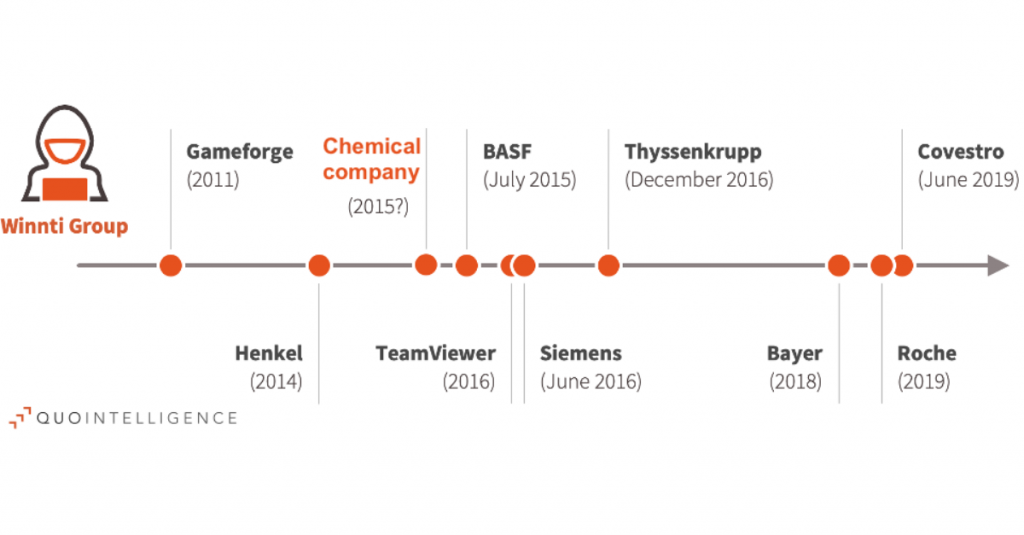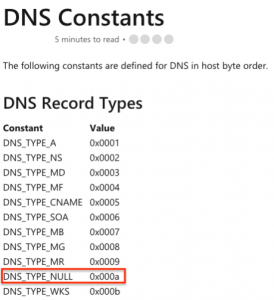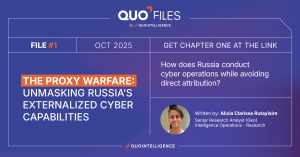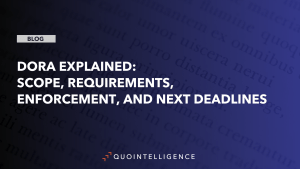Newly uncovered DNS tunnelling technique, and new campaign against South Korean gaming company
Executive Summary
- In January 2020, QuoIntelligence (QuoINT) detected a new Winnti sample uploaded to a public virus scanner from a German location. Following our preliminary analysis, we assessed with high confidence that the sample was used to target a previously unreported German chemical company. As part of our responsible disclosure, we alerted the affected entity, the local Law Enforcements, and our clients.
- In the following weeks after our internal reporting, the German news media source Tagesschau reported our initial detection and analysis of the sample, and confirmed the chemical company’s awareness of the attack in the second half of 2019.
- The Winnti sample we analysed was highly likely developed in 2015, and likely used around this year for the first time, it is unclear how long the compromise existed in the compromised environment.
- Although the malware was likely used years ago, further analysis revealed a previously unreported C2 technique never attributed to any Winnti Group’s toolkits.
- The technique relies on a DNS Tunneling communication channel through a custom implementation of the iodine source code, an open-source software that enables the tunneling of IPv4 data through a DNS server.
- Additionally, we uncovered a previously unknown stolen digital certificate being used to digitally sign Winnti-related attack components, and the targeting of a previously-unreported South Korean video game company.
- The sophistication of the techniques we uncovered confirms that the Winnti Group is a highly sophisticated, and highly committed Advanced Persistent Group targeting a plethora of different industry sectors in Europe and South Asia.
Introduction
The Winnti Group (also known as APT41, BARIUM, and Blackfly) is an alleged Chinese state-sponsored umbrella organization in China’s intelligence branch linked through their use of shared goals and attack resources. The suspected state-sponsor link to China’s government pinpoints that it likely has an incentive to continue targeting a variety of industries, especially one’s highlighted as priority for China’s economic development.
On Friday, 13 January, QuoIntelligence (QuoINT) detected a new Winnti sample uploaded to a public virus scanner from a German location. Following our preliminary analysis, we assessed with high confidence that the sample was used to target a previously unreported German chemical company. Additionally, during our analysis we uncovered a previously unknown stolen digital certificate being used to digitally sign Winnti related drivers, and a potential campaign against an already known South Korean video game company.
In the last year, researchers and journalists have publicly disclosed that the Winnti group targeted and eventually compromised Henkel (2014), BASF (2015), Bayer (2018) and Roche (2019). This most recent previously unreported German chemical company is yet another German chemical company targeted by Winnti since 2015. Prior to our analysis this attack activity was not publicly reported.
 Figure 1: Timeline of attacks located in Germany and attributed to Winnti
Figure 1: Timeline of attacks located in Germany and attributed to Winnti
In December 2019, Germany’s Federal Office for the Protection of the Constitution (BfV) released a report related to the alleged Chinese state sponsored umbrella organization known as the Winnti Group. Through our internal malware analysis, we are confident that the sample we discovered is highly similar to the Winnti sample described in the BfV report. The sample also matches known characteristics of Winnti’s arsenal shared through intelligence reports produced by ESET.
Further, we have informed the affected company, law enforcement agencies, and sent a Warning to our customers upon detection.
The Winnti Group
The Winnti Group (also known as APT41, BARIUM, and Blackfly) is an alleged Chinese state-sponsored umbrella organization in China’s intelligence branch linked through their use of shared goals and attack resources. Notably, various operations attributed to other China-linked threat actor groups, such as APT17 and Ke3chang, have also leveraged its backdoor malware. Active since at least 2010, initial attacks attributed to the group heavily targeted the gaming industry. However, as researchers have continued to follow and dissect the group and its activity, the group’s target focus has expanded to other industries, including chemical, pharmaceutical, technology, and software. Further, the group’s evolution involves the enhancement, development, and inclusion of new tools and tactics.
The suspected state-sponsor link to China’s government, pinpoints that it likely has an incentive to continue targeting a variety of industries, especially one’s highlighted as priority for China’s economic development. In the latest Winnti Group public report, FireEye researchers reported of a new widespread campaign attributed to APT41 which involves exploitation attempts of recently disclosed and patched vulnerabilities for products of Cisco, Citrix, and Zoho. The campaign waves apparently take a more targeted approach to selecting potential victims across various sectors including financials, government, and information technology. According to the researchers, identified victim systems demonstrated the threat actor leveraged commercially available post exploitation tools such as Cobalt Strike and Meterpreter, which are essentially full featured backdoors.
Technical Analysis
Sample Targeting German Chemical Company
The main artifact uploaded to VirusTotal is a Dynamic Link Library (DLL) file, with a compilation timestamp suggesting the sample was built in August 2015. Although the compilation time might be legitimate, it is not possible to determine when and how long the attackers used this malware.
| HASHES |
Compilation Timestamp |
Filename |
|
MD5: c893a12ff72698f09f89f778e4c9cd2b
SHA1: 06256946a69409cd18859bfa429184a282374d76
SHA256: df6af36626d375c5e8aff45c64bfc1975d753b109e126a6cb30ee0523550329c
|
2015-08-06 01:52:51 | TmPfwRVS.dll |
Table 1 – Winnti sample
Binary Analysis
Similar to other Winnti samples, the configuration section contains a string referring to the name of the campaign. In this case, at 0X020, the referred campaign name is the name of the chemical company – redacted for the purposes of this blog.

Figure 2 – Extracted configuration from Winnti sample
The analysed artifact we observed contains the following binaries listed below, and also aligns with observations in the BfV report.
| HASHES | Compilation Timestamp | Filename |
|
MD5: c893a12ff72698f09f89f778e4c9cd2b
SHA1: 06256946a69409cd18859bfa429184a282374d76
SHA256:
df6af36626d375c5e8aff45c64bfc1975d753b109e126a6cb30ee0523550329c
|
2015-08-06 01:52:51 | TmPfwRVS.dll |
|
MD5: cf140dc4cad9e8216545593a4c08c7be SHA1: 2b319b44451abb0596b9187e06f1fb7b4ace969d SHA256: bfa8948f72061eded548ef683830de068e438a6eaf2da44e0398a37ac3e26860 |
2015-08-05 12:08:00 | driver1.sys |
|
MD5: cc95391d75ce2443740f60114fe30ae9 SHA1: 30d1dd1dd4f0ace7a4f2c24e31fb6a0ee33e8a3a SHA256: 8ddc6dd9fc3640cd786dfbc72212cd001d9369817aa69e0a2fa25e29560badcf |
2015-05-05 11:31:13 | driver2.sys |
|
MD5: b4e66b445b39d0368bbe4b91a3cd98ff SHA1: 2bc358ddc72f59ba0373b8635ab08ad747c12180 SHA256: 1865013aaca0f12679e35f06c4dad4e00d6372415ee8390b17b4f910fee1f7a2 |
2014-12-15 16:06:41 | dsefix.exe |
|
MD5: eaea9ccb40c82af8f3867cd0f4dd5e9d SHA1: 7c1b25518dee1e30b5a6eaa1ea8e4a3780c24d0c SHA256: cf3a7d4285d65bf8688215407bce1b51d7c6b22497f09021f0fce31cbeb78986 |
2008-May-31 02:18:53 UTC | vboxdrv.sys |
Table 2 – Additional artifacts contained by bfa8948f72061eded548ef683830de068e438a6eaf2da44e0398a37ac3e26860
Analysis of dsefix.exe
This is essentially Windows x64 Driver Signature Enforcement Overrider (DSEFix), used to temporarily disable the driver signature enforcement on Windows systems by using an included old, legit VirtualBox driver, both signed and exploitable. By running dsefix.exe, the malware can bypass driver verification and install its own drivers. We identified the following two drivers which were embedded in the earlier described main artifact. To note that this technique does not work on moden Windows (e.g. Windows 10) – yet another piece of evidence that this malware was designed and used multiple years ago.
Analysis of vboxdriver
This is the vulnerable, correctly signed with a digital certificate, VirtualBox driver that is used for exploitation. It is used regularly by various threat actors, and by the previously highlighted dsefix.exe. The driver can also be used to perform the Turla Driver Loader (TDL) exploitation technique, a similar technique as DSEFix.
Analysis of driver1.sys
In late 2019, ExaTrack released their analysis of a signed Winnti rootkit previously observed in the wild, which we confirm is essentially the same rootkit driver. The sample is capable of injecting raw packets into the network and receiving special formatted packets. In comparison, our variant has the same exact number of bytes, and there are large parts exactly matching.
Analysis of driver2.sys
This rootkit driver seems to be largely the same as driver1.sys with the same characteristics including structure, I/O control, and device strings. However, this driver supports different versions of Windows. It checks for ranges of Windows New Technology (NT) build numbers and returns early.
C2 DNS Tunneling
By analyzing the malware, it is possible to find two network indicators within its code:
Figure 3 – observed network IoCs in Winnti sample
The hardcoded 208.67.222.222 is a legitimate OpenDNS DNS server (resolver1.opendns.com). This IP is pushed into a list that is generated by the malware at runtime. Likely, the initiation routine also populates the list with the system’s DNS, and the OpenDNS server is only used as fallback case to ensure the C2 domain gets resolved.
The dick[.]mooo[.]com FQDN name is offered by FreeDNS, which is a free dynamic DNS service. Notably, in the last years, multiple researchers have reported Winnti/PlugX C2 hostnames hosted in the mooo[.]com zone. In the code we observed that a dot (.) is enforced before the FQDN. Additional analysis revealed that the malware generates subdomains with base128 encoding, and append them to FQDN.

Code 1 – Hostname length restriction
Further, dots are added into it every 57 characters potentially as a hostname length restriction, suggesting the expectation of long hostnames. We confirm the buffer can support FQDN’s up to 2000 characters.
Upon further investigation we found out that the malware includes the open source iodine source code – software that enables the tunneling of IPv4 data through a DNS server. Interestingly, we are not aware of any earlier documentation highlighting Winnti specifically leveraging iodine for DNS tunneling. However, researchers at the Ruhr University Bochum, while hunting for DNS tunnels, observed APT32 and Wekby APT groups using NULL and TXT records as a C2 communication channel, as well as mentioning the mooo[.]com top level domain in their findings.
The implementation of iodine used in the Winnti sample is integrated and uses some custom wrapper, as evidence by the matching functions we discuss in further detail in the following section.
Use of Iodine for C2 DNS Tunneling
The iodine DNS tunneling solution is embedded in the DLL that is initially loaded and executed in memory, and includes at least the following 15 matching functions:

Table 3 – Malware DLL Functions
For instance, the 64bit executable contains the build_hostname function (Code 2), which corresponds with the older 32bit version (compiled with debug symbols) of iodine 0.6.0 (Code 3):
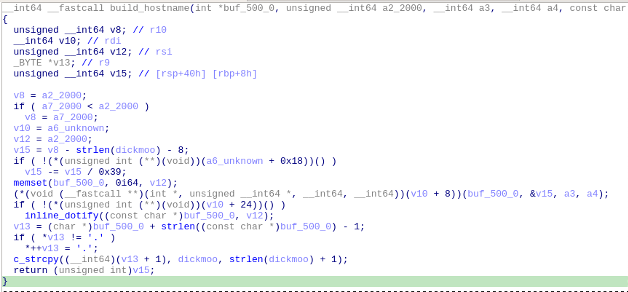
Code 2- iodine_0-6-0_build_hostname
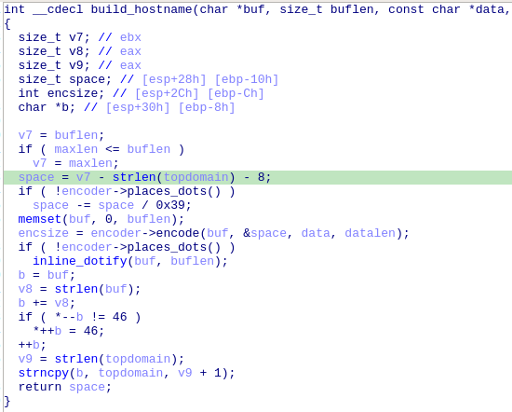
Code 3- iodine_0-6-0_build_hostname
Based on the presence of the functions base128_blksize_enc and base128_blksize_raw, we determined the version used, while not exactly known, is from before May 2017 when a patch removed those functions. Further, comparative analysis indicates that for the implementation of iodine in this Winnti attack operation, there is no perfect match for the two versions having 64bit pre-compiled binaries. This indicates iodine was compiled from source, and it is reasonable it is being used as a library, and not in its normal distribution format of a standalone executable.
The DNS Tunneling technique adopted by the malware through the use of iodine is detailed in the figure below.

Figure 4 – C2 channel over DNS
- The malware generates a hostname and appends it to the embedded C2 dick[.]mooo[.]com, and makes a NULL query to the resulted FQDN (e.g. abcde is appended to .dick[.]mooo[.]com). Notably, NULL and TXT DNS request types are iodine’s preferred channels since they are “expected to provide the largest downstream bandwidth”. It is hence not a coincidence that researchers at Ruhr University Bochum also observed an extensive use of NULL request types for DNS Tunneling purposes in their research.
- The infected host sends the DNS query to one of the DNS servers included in the list populated at runtime, eventually to the OpenDNS fallback server. At this point the DNS server executes a recursive DNS query by contacting the Name Servers (NS) of each zone, until the Authoritative NS of dick[.]mooo[.]com is obtained. To note, FreeDNS does provide users the capability to delegate the authority of their subdomains to external NS. In the described scenario, attackers delegated the NS of their subdomain to use their NS as a de-facto C2 server.
- The DNS server returns the authoritative answer by forwarding the content of the NULL record type to the infected host. Notably, the legit DNS server acts as a proxy between the infected host and the malicious server, by making impossible for defenders the application of any filtering at the Network (L3) level.
The NULL DNS record type
The implementation of NULL type tunneling can be observed in the following excerpt taken while reversing the malware:
![]()
The third argument when calling dns_encode shall be of the type “struct query”
from Iodine’s dns.c

According to common.h, “struct query” is defined as:
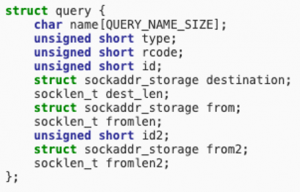
Since QUERY_NAME_SIZE equals to 512 (4 *128 – integers are 4 bytes) the query[128] call obtained from the reversing activity is indeed the DNS query type.
As noted, reversing activity detailed the query[128] value to be 0xa. From Iodine’s windows.h T_NULL is DNS_TYPE_NULL
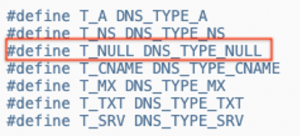
Finally, from Windows’s documentation, DNS_TYPE_NULL is actually a Windows constant equal to 0xa
Winnti Signed Code With Digital Certificate from IQ Technology
During our analysis of the Winnti sample configured to target the German chemical company, our comparative analysis of other Winnti related drivers revealed a digital certificate issued to IQ Technology, a Taiwanese company producing Natural language processing (NLP) and Artificial Intelligence (AI) software. The rootkit driver aligns with the already known driver1.sys. While it is a known TTP that Winnti attributed attacks have involved stolen digital certificates for code signing its malware components, the use of this certificate is not publicly discussed, except for a brief report from a security researcher apparently associated with a Vietnamese security company. Although the report is no longer online, the discussed sample contains a compilation timestamp of August 2015, which is the earliest one observed in the wild that we identified using this digital certificate. At the time of analysis, the digital certificate was already revoked.
The sample’s structure, debug symbols, and explanatory debug messages included within suggests it is highly likely be a development version. Additionally, the compilation timestamp indicates the sample was created 20 minutes prior to the driver1.sys. Both samples are highly related, and its contents combined with the date of analysis and reporting essentially solidify that it existed in 2015; however, this does not necessarily corroborate to an attack timeframe.
Sample Targeting South Korean Gaming Company
| HASHES | Compilation Timestamp |
|
MD5: 00961922e22e6a5d30b1d6fbd667d3c4 SHA1: 0fd54c26b593bd9e9218492d50d8873521c0ec0d SHA256: 4209b457f3b42dd2e1e119f2c9dd5b5fb1d063a77b49c7acbae89bbe4e284fb9 |
2016-03-07 09:44:01 |
Table 3 – observed network IoCs in Winnti sample
On 21 February, we detected the new submission of a 64-bit Winnti executable to a public online malware scanning service. As multiple researchers have reported, Winnti operators embed the name of their target directly into the malware, but in an obfuscated manner.
Binary Analysis
The sample resembles the Winnti Dropper Install.exe described by ESET, since it is a command line executable used to drop and load additional encrypted payload:

Unfortunately we were not able to find the payload meant to be decrypted by this dropper.
However, we were able to extract the malware’s configuration file and identify the intended target. In this case, the following string was included within the extracted configuration:

Based on previous knowledge and targeting of the Winnti Group, we assess that this sample was likely used to target Gravity Co., Ltd., a South Korean video game company. The company is known for its Massive Multiplayer Online Role Playing Game (MMORPG) Ragnarok Online, which is also offered as a mobile application. As we have also reported in the past, the video game industry is one of the preferred targets of the Winnti Group, especially for those companies operating in South Korea and Taiwan. Interestingly, ESET researchers, while reporting on multiple Winnti Group campaigns targeting the video game industry, listed in their report a C2 server having a Campaign ID GRA KR 0629.

Excerpt from ESET Research White paper “CONNECTING THE DOTS Exposing the arsenal and methods of the Winnti Group”
At this time, we do not have any further evidence supporting a potential link between the sample we analysed and the C2 detailed by ESET, but the coincidence between the C2 Campaign ID/Location with the Campaign ID we extracted from the Winnti dropper is worth noting.
Conclusion
The Winnti Group has exhibited their ability to breach different organizations and conduct sophisticated attack operations, typically motivated by espionage and financial gain, with various TTPs and malware toolkits. While attribution is not concrete due to the complexity of the group, there are links that can be drawn between operations which suggest the threat actors purporting the attacks are likely operating within the Winnti Group, or at least sharing resources.
The detection of this unreported Winnti variant uploaded to VirusTotal and targeting a German chemical company aligns with our prior observations and research from previous intelligence reporting highlighting Winnti Group’s interest in German DAX companies. As a result, organizations of all sizes, but especially small to medium sized companies, including Germany’s hidden champions, should prepare against such threats as they are vital to the economic ecosystem and continuous development of niche markets. Government oversight (local, regional, and across the EU) should ensure susceptible organizations such as these are following regulation and implementing security best practices to protect against future attacks.
Appendix
Indicators of Compromise
4209b457f3b42dd2e1e119f2c9dd5b5fb1d063a77b49c7acbae89bbe4e284fb9
cf3a7d4285d65bf8688215407bce1b51d7c6b22497f09021f0fce31cbeb78986
1865013aaca0f12679e35f06c4dad4e00d6372415ee8390b17b4f910fee1f7a2
8ddc6dd9fc3640cd786dfbc72212cd001d9369817aa69e0a2fa25e29560badcf
bfa8948f72061eded548ef683830de068e438a6eaf2da44e0398a37ac3e26860
df6af36626d375c5e8aff45c64bfc1975d753b109e126a6cb30ee0523550329c
4209b457f3b42dd2e1e119f2c9dd5b5fb1d063a77b49c7acbae89bbe4e284fb9
cf3a7d4285d65bf8688215407bce1b51d7c6b22497f09021f0fce31cbeb78986
1865013aaca0f12679e35f06c4dad4e00d6372415ee8390b17b4f910fee1f7a2
8ddc6dd9fc3640cd786dfbc72212cd001d9369817aa69e0a2fa25e29560badcf
bfa8948f72061eded548ef683830de068e438a6eaf2da44e0398a37ac3e26860
df6af36626d375c5e8aff45c64bfc1975d753b109e126a6cb30ee0523550329c
*.dick[.]mooo[.]com
208[.]67[.]222[.]222
45[.]248[.]85[.]200
MITRE ATT&CK
| Tactic | Technique | Recommended Course of Action |
| Persistence / Privilege Escalation |
T1215 Kernel Modules and Extensions T1068 Exploitation for Privilege Escalation |
Anti-Virus software and Advanced End-Point solution can drastically reduce the risk of both techniques. |
| Defense Evasion |
T1009 Binary Padding T1014 Rootkit T1116 Code Signing |
Many of the samples analysed were signed with expired / revoked certificate. Enforce signature validation via Group Policies for executables |
| Exfiltration |
T1022 Data Encrypted T1048 Exfiltration Over Alternative Protocol |
– For DNS Tunnel, ensure that DNS logs are collected and reviewed. – DNS telemetic data should be also collected in order to spot frequent and heavy loaded DNS communication that are definitely not related to an usual DNS query. – FreeDNS and DynDNS servers should be blacklisted/synkholed if not strictly required – DNS NULL type queries should not be avoided. Only the required record types should be allowed. |
